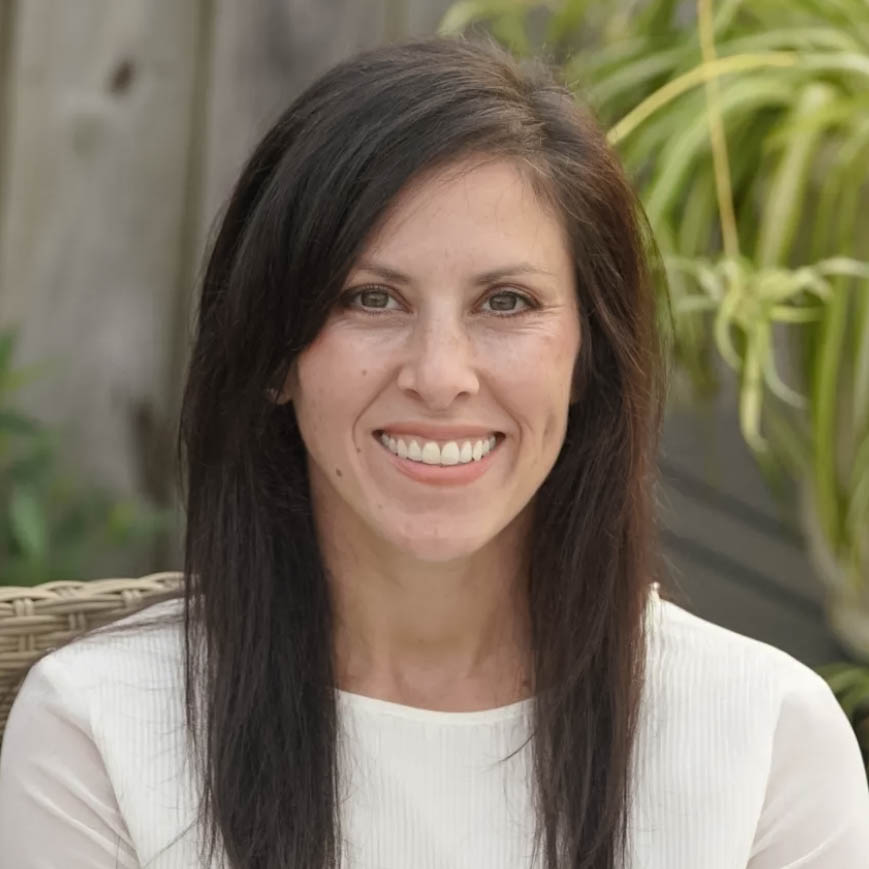
The following is an excerpt from the short interview between Holly Tanner and Tara Sullivan discussing her course Sexual Medicine in Pelvic Rehab. Watch the full video on the Herman & Wallace YouTube Channel.
Hi Tara, can you introduce yourself and tell us a little bit about your background?
Sure! So I’m Tara. I’ve been a pelvic health rehab therapist for about 10 years now. I started right out of PT school and I got a job at a local hospital where they were looking to grow and build the pelvic rehab program. So of course, I found Herman & Wallace and started taking all of the classes there that I could and just kept learning over the years. Now the program is expanded across the valley, we have nine different locations, and it’s been very successful and fulfilling. It’s my passion.

The following is an excerpt from an interview between Niko Gaffga, MD, FAAFP, MPH (NG) and Holly Tanner (HT) about why he is interested in women’s health and the menstrual experience. Niko and Amy Meehan, PT, DPT, MTC have co-authored a specialty course for H&W all about Menstruation and Pelvic Health – to learn more join us in the upcoming remote course on July 16th-17th, 2022. You can watch the full video interview below, or on the Herman & Wallace YouTube Channel.
HT – So menstruation as a topic, what is it that got you so passionate about this particular topic?
NG -Throughout my career and my training, women’s health and OB have been one of my favorite parts of my job. In recent years there was a patient who really inspired me. I came into the room, and she was sitting in the corner in the exam room of the clinic where I worked and she was crying. I came in and I asked, she only spoke Spanish…and I asked her “ How are you doing? What’s happening?” and she was very reluctant to say anything.
This week for the Pelvic Rehab Report, Holly Tanner sat down to interview faculty member Erica Vitek, MOT, OTR, BCB-PMD, PRPC on her specialty course Parkinson Disease and Pelvic Rehabilitation. If you would like to learn more about working with this patient population join Erica on June 24th-25th for the next course date!
This is Holly Tanner with the Herman and Wallace Pelvic Rehab Institute and I'm here with Erica Vitek who's going to tell us about of course that she has created for Herman and Wallace. Erica, will you tell us a little bit about your background?


This week The Pelvic Rehab Report sat down with new faculty member, Emily McElrath PT, DPT, MTC, CIDN, to discuss her pelvic rehab journey and her new course, Pregnancy and Postpartum Considerations for High-Intensity Athletics. Emily is a native of New Orleans, is highly trained in Sports and Orthopedics, and has a passion for helping women achieve optimal sports performance. Emily is also certified in manual therapy and dry needling, which allows her to provide a wide range of treatment skills including joint and soft tissue mobilization. She is an avid runner and Crossfitter and has personal experience modifying these activities during pregnancy and postpartum.
Hi Emily! Can you tell us a little bit about yourself and your clinical practice?
My name is Emily McElrath, and I am an orthopedic and pelvic floor PT. I spent the early years of my career in sports medicine and primarily worked with high school and collegiate athletes, as well as weekend warriors. I myself am a distance runner and Crossfitter and have always had a love for sports. After the birth of my second child, I had a hard time returning to Crossfit due to significant pelvic floor dysfunction and pain. At that time, I became a pelvic floor patient and quickly realized how valuable this specialty was. This began my journey to becoming a pelvic PT.
This week, faculty member Kate Bailey sat down with Holly Tanner to discuss her course Restorative Yoga for Physical Therapists.
Hi Kate, can you tell us about the course you have designed Restorative Yoga for Physical Therapists?
My name is Kate Bailey and I am a pelvic floor physical therapist. I’ve been a pelvic floor PT going on4-5 years now. Before that, I’ve been a pilates instructor for 20 years and taught yoga for over a decade. This course is a culmination of all of my experiences both with the yoga, pilates, and the pelvic floor population from kiddos through adulthood. It allows us to use the techniques from the yoga and pilates philosophies to support people in their healing process from pelvic pain and also just in their bodies.
This week the interviewer becomes the interviewee as Stacey Futterman Tauriello sits down to interview Holly Tanner on the Male Pelvic Floor course.
Stacey Futterman reached out to Holly Tanner back in 2007 through a phone call to see if they could partner on a lecture covering male pelvic pain. The two had never met in person but decided to collaborate on the three-hour APTA National Conference lecture. Holly shares "I still recall the frequent glances I made to match the person behind the voice I had heard for so many long phone calls.”
This presentation was developed into a two-day education course for Herman & Wallace and contained lectures on male anatomy, post-prostatectomy urinary incontinence, pelvic pain, and sexual health and dysfunction. The big question of the time was “should we allow men to attend?” Holly puts this in perspective, “As strange as this question now seems, it speaks volumes about the world of pelvic health at that time; mostly female instructors taught mostly female participants about mostly female conditions.”
The Birth Healing Summit is a virtual summit that runs from April 4th through April 14th. Faculty member Nari Clemons will be speaking on Sunday, April 10th!
H&W is partnering again this year to bring the Birth Healing Summit virtually to you. Lectures throughout the summit present practical information, instruction, and tools that can be implemented in your practice right away. The summit is scheduled to run from April 4th to April 14th with 2 recordings going live each day with the intention to help practitioners to help moms heal body, mind, and spirit after birth! Also, twice during the summit, there will be a LIVE Facebook Q & A which is a great opportunity to speak to the experts and ask any questions you may have.
You can register for the summit now or get more information on the website here:
https://courses.instituteforbirthhealing.com/birth-healing-summit/ibh/77
As physical therapists and bodyworkers, the majority of training is focused on anatomy, physiology, and techniques to apply force to the body. While this is an effective way to treat the body, the summit is going to explore “out-of-the-box” solutions to achieve deeper healing. All 20 interviews will introduce you to a new approach to treating the common postpartum issues that women face.
These interviews are so packed with valuable information, instruction, and tools that you will want to listen to them over and over again. The All-Access Pass – Video or Video Plus, will allow you to review each at your own convenience or refer back to the information for a specific client case. It’s like having a reference library at your fingertips whenever you need it.
DAILY ACCESS: You receive 20 interviews with experts, plus their gifts for FREE!
Here is how it works:
- Starting April 4th, 2 speaker video-recorded interviews will be released each day.
- You will have 48hr to view, learn and enjoy the interviews.
- Sorry, no CEU’s available
VIDEO ALL-ACCESS PASS: You receive immediate access to all 20 interviews and the gifts.
Here is how it works:
- Starting March 21, you can purchase to gain full access to all the video-recorded interviews and gifts.
- You will have lifetime access to learn and enjoy the interviews.
- Sorry, no CEU’s available.
VIDEO PLUS ALL-ACCESS PASS: You receive immediate access to all 20 interviews and the gifts.
Here is how it works:
- Starting March 21, you can purchase to gain full access to all the video-recorded, audio, and transcripts plus the gifts.
- You will have lifetime access to learn and enjoy the interviews.
- Sorry, no CEU’s available.
Herman & Wallace's own Nari Clemons will be one of the 20 speakers talking about 'Mediation and Intention as Tools to Decrease Burnout' which is close to her heart! If you join Nari's lecture and enjoy the subject, she also co-instructs a course with Jennafer Vande Vegte for H&W to further deep dive into this topic called Boundaries, Self-Care, and Meditation which can be found on the H&W Online Courses page.
A few of the other lecturers and topics that you may be interested in:
- Lynn Schulte, PT - Pregnancy and Postpartum Impact on the Organs
- Rachel Shapiro, CNM - The Uterosacral LIgament - Sex and Postpartum Wellness
- Kathleen Kendall Tackett A New Paradigm for Depression in New Mothers
- Raylene Phillips, MD - Preventing and Minimizing Birth Trauma
- Rixa Freeze - Making Breech Birth Safe Again
Better support your client's pregnancy and labor and speed up their recovery by listening in. H&W hopes to see you at the Summit! Join the Summit Here: https://courses.instituteforbirthhealing.com/birth-healing-summit/ibh/77
This week Jennafer Vande Vegte and Nari Clemons sat down to share their course Boundaries, Self-Care, and Meditation with us to give a peek into the why, what, and how of it all.
Steve Dischiavi sits down with Holly Tanner to discuss his remote course - Athletes and Pelvic Rehabilitation.
Can you tell us a little bit about yourself and your background?
Most people spend their days alternating between sitting and standing, changing positions constantly. How many of us take the time to think about the position of our coccyx, ilia, or sacrum? The coccyx typically is minimally weight-bearing in sitting, about 10%, just like the fibula. However, it can become a major pain generator if the biomechanics of the ilia, sacrum, and femoral head positions are not quite right.
Coccydynia and Painful Sitting is a course that can be related to all populations that physical therapists treat. A lot of patients will state “my pain is worse with sitting” which can mean thoracic pain, low back/sacral pain, and even lower extremity radicular pain.
Coccyx pain patients often have more long-standing pain conditions than other patient types. For the most part, the medical community does not know what to do with this tiny bone that causes all types of havoc with patient pain levels. Lila shares that "Sometimes treating a traumatic coccydynia patient seems so simple and I am bewildered as to why patients are suffering so long - and other times, their story is so complex that I wonder if I can truly help."








































